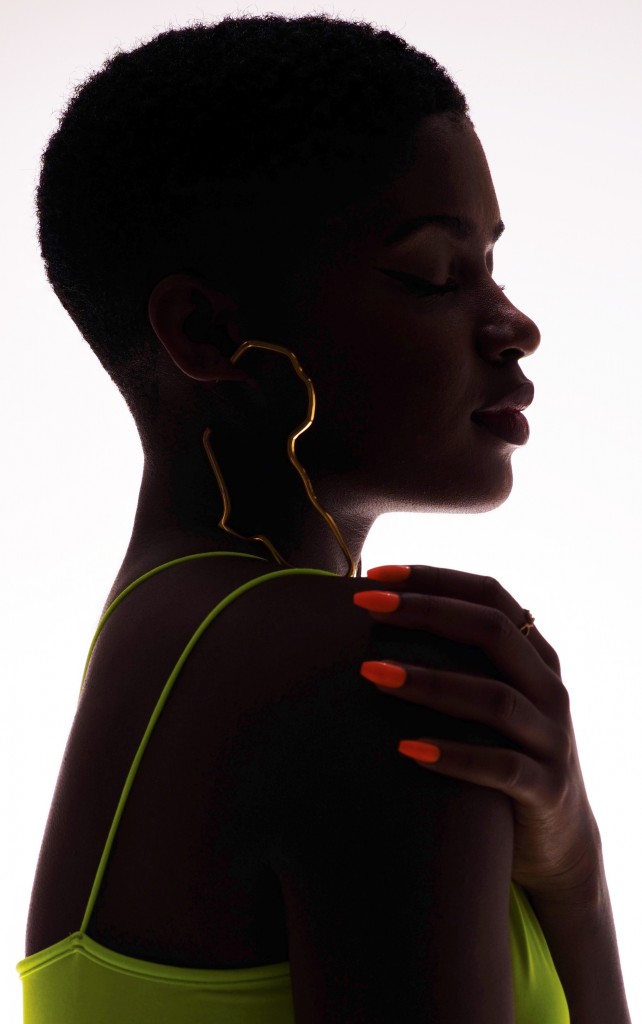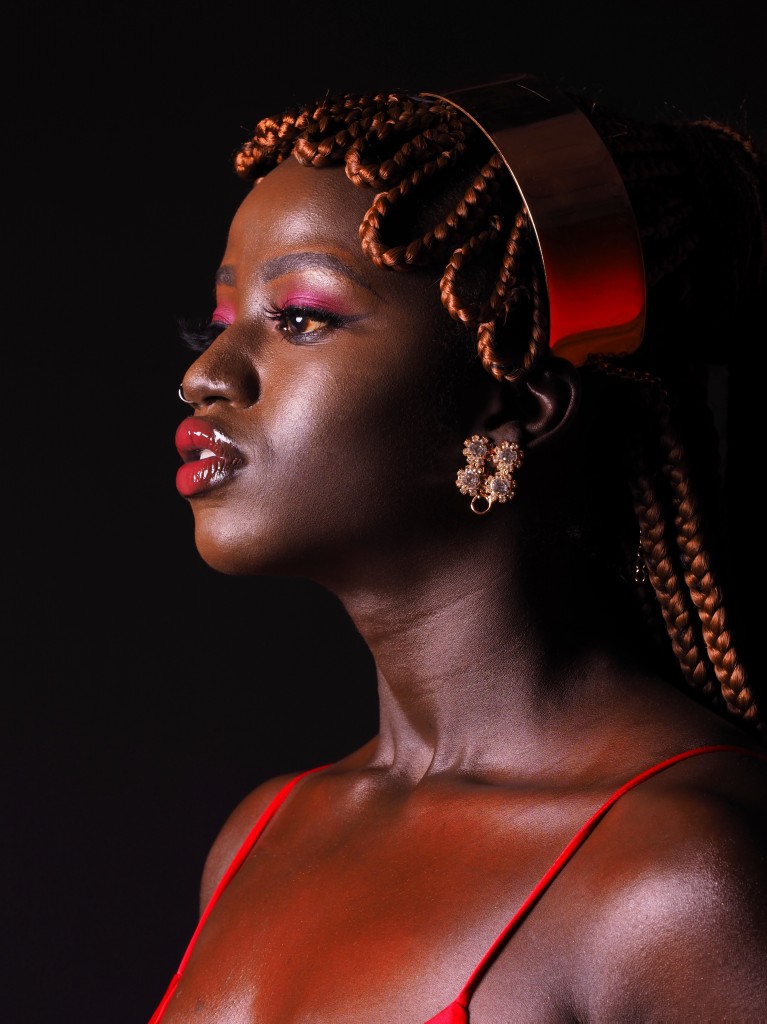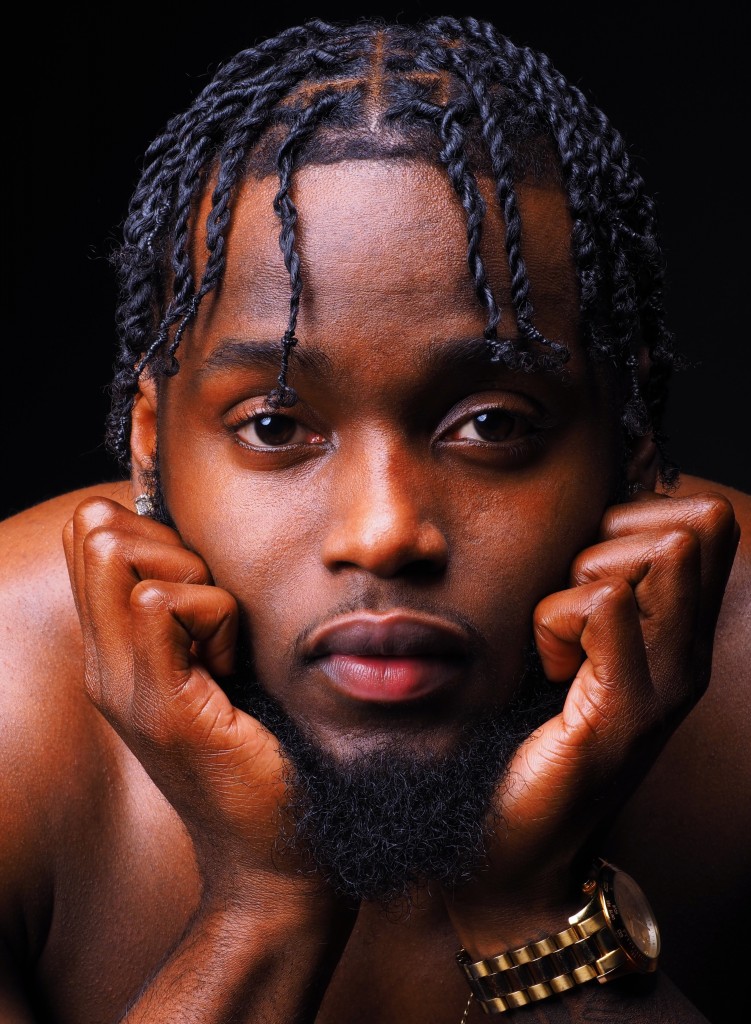In a series of rapid-fire shutter clicks, Adam Eaton, twenty-nine, has emerged as an energetic and empathic advocate for other creatives and community members—having fixed his artistic vision on four pillars: community, honesty, love, and beauty. He began exploring photography through an iPhone lens.
“I had my first studio,” says Eaton,“at 540 West Main Street, right around the corner from [the National] Susan B. Anthony Museum & House. I had painted a wall black and noticed that one NOMO [mobile camera] app filter gave a cool effect. I really loved that moody feeling. It made the colors very vibrant. I just had one ring light I bought [from] Amazon for, like, fifty dollars. That was my setup.”
Eaton admits to always feeling creative and took arts electives while at Penfield High School. He was schooled in collaboration, having sung in chorus from a young age.Viewing himself as an artist took more time to develop.
“We all have the ability to create!” he gushes. “It was a new concept for me to be considered an artist, though I never necessarily sat down and practiced something like I did with photography. I like the immediacy of it—the freedom to play with light and [color].”
While striving, Eaton remains attuned to access and opportunity. “Rochester makes it difficult for emerging artists to grow and prosper and feel supported in the way the arts community is structured now.” Two years in, he has taken steps to correct that.
Aperture set wide
Aperture set wide with a narrow f-stop, Eaton figuratively and literally casts light on subjects dear to him.While entertaining (585) in his Anderson Arts Building studio at 250 North Goodman Street—a creators lab equipped to meet his needs and those of the ten-plus members of the Rochester Artist Collaborative (RAC) he founded—he models kinship, authenticity, warmth, and refinement. Ultimately, he says, RAC’s goal is to support 100 artist-members.
Until the summer of 2021, Eaton worked at Monroe Community College full time and pursued his craft part time, exploring how art and culture shape definitions of beauty. “When I first started, I just wanted to have the ability to create. I knew that I liked taking photos of people and [thought], ‘If I post to Facebook, more people will want me to practice [on them].’ I would work my nine-to-five and then do photo shoots four to five times a week.”
Immersed in creating, he grew to love the process. With encouragement, his view shifted: He was an artist! Everything was changing, so why not embrace big change? Believing today’s standards exclude people of color, the visual artist set out to inspire and instill hope closest to home by, as he says, “using light and shadow to capture the beauty of all skin tones.” Soon he was offered a year’s financial support from a sponsor who wanted to make his new career and RAC sustainable.
“Donations like that, from the community,” says Eaton,“are the only reason I can continue [my] art.” The transaction was facilitated by The Field, an organization that partners with artists and arts workers to help them reach their goals. Eaton and the photography of RAC member Cocoa Rae David have been spotlighted on TheField.org.
Zoom in on business
From opposite coasts, Kirsten Michelle Schnittker (artist services associate) and Shawn Rene Graham (deputy director of programs and services) have helped Eaton refine his business plans and models. Eaton was referred by Reenah Golden, a Field- sponsored Rochesterian and founder of the Avenue at 780 Joseph Avenue, a theater billed as “where the cool kids come to play.” Golden says of Eaton, “I absolutely love the … resilience Adam put forth in creating space for his work in Rochester and felt that expanding his vision to include the Field was a perfect next step! Adam already has the talent and vision. The Field lets others support that in a way that doesn’t disrupt what he sees as his next level.”
“Our main offering,” explains Graham, “is fiscal sponsorship, a formal arrangement between an individual or group and a 501(c)(3). Engaging with a fiscal sponsor enables artists and arts organizations to receive the benefits of a nonprofit without the full [weight of responsibility].
“We also offer artists [training in] topics from budgeting to financial wellness to producing. Our relationship allows Adam to seek grant opportunities as well. We assist by giving feedback on applications and [providing] supporting materials they need to prove tax-deductibility to a donor or funder.”
Grahm says that Eaton exemplifies “how to maintain a healthy relationship with your fiscal sponsor. Adam is committed to … business and has been a great communicator [who built a] strong presence in the Rochester community.”
The Field staff, she adds, is eager to witness the collective’s growth.
Four keys, illuminated
In crafting his artist’s statement, Eaton clarifies, “My work as an artist and a creative director is precious to me. Through my art, I want to show the world that Black people are beautiful. As a Black man in America, the world does not always make me feel loved. Many in my community feel this way. [I use] my power as an artist to speak to these subjects.”
Photography has let him capture, share, and illuminate the nuanced beauty of those he believes are unseen—finding them hidden among the majority on social media. What follows was captured as traces of sunlight filtered through oversized windows, punctuating Eaton’s words.
Community
“I want people to feel connected to my art, [to] images that have an emotional connection to our community. My vision of what I would want is for the city to [hire] artists in the community to create art for the community. A lot of that, now, is focused on maybe one or two people. If it was ten or twenty, imagine how much good [the city could do].”
Eaton, a Rochester native, says discovering photography, meeting other artists, and venturing out taught him that “People gravitate toward artists because artists are giving a gift—and people love receiving gifts! Artists create beauty and those are just things people gravitate toward. If we tapped into that idea more and artists had the ability to create more art for the community, it would just make things more connected.”
Honesty
“If you’re honest with yourself and honest with others, [it] makes your personal journey in life easier … and less stressful. [Some] truths in life are difficult to go through, like emotional traumas and other things people have dealt with in their lives. [Some] people don’t even know how to express [those emotions].
The [RAC studio] space is run on honesty: The equipment is there—you don’t have to, like, sign in or sign out, [and] everyone has a key to the door. It’s all based on making sure that we are working together and doing things [that] will help each other grow. [If] you’re trying to grow your business, or become better and grow your practice as an artist, it’s important to be honest and to have trust with other people.”
Love
“Love is really the center of everything: the center of family, the center of a community, the center of unity and togetherness. Without love, all those bonds break apart. [With] love, anything can be abolished: racism, discrimination, disunity, … disagreement. If we love and cover over those type of things with love, it just brings us closer together.
[People] are going through so many problems in the world, but specifically in Rochester: police brutality, racism. Many people are impoverished and in neighborhoods that are low income. [It creates] challenges in their day-to-day lives. How can you be upset with someone—how can you be feeling [negatively] toward somebody—when they’re dealing with all of these challenges?” Preexisting stress and pressures, adds Eaton, make it easy to view Rochester-at-large as insensitive, given brutalities suffered by Daniel Prude and others. Authority figures who have failed to care for, protect, and defend all people’s rights trigger disillusionment in those who feel downtrodden while doing the best that they can.
“Everyone can understand that idea,” he says.“If you live in maybe a suburban neighborhood, your policeman, municipality is not necessarily making your life harder or more difficult. But in the city of Rochester, where people are in a lot of poverty, those situations are happening a lot.”
Beauty
“I believe all humans are beautiful. My art focuses on the people and the beauty of Rochester. [I’m] self-conscious about how I look, and I think that comes from being a Black male in America. You’re not always seen as beautiful or people don’t necessarily tell you that you’re beautiful when you’re male—so, I’ve always struggled with that idea.
“I think that’s why a big part of my art is making other people feel beautiful. America and our beauty standards lean toward being white. And being thin. Or being tall. I believe it’s important to make everyone feel that they’re beautiful. [If] you get into the right light, anyone can be the most gorgeous person you’ve ever seen—literally.”
Eaton structures his days so that he remains energized, but he comes alive at night. He is in the habit of “shooting” in the evening when studio space is available to him.That is not, however, the reason he opened his studio space to RAC members during the day. “The goal, from the beginning,” he says, “was to use whatever I have to help others. It comes from probably, I would say, my parents. They’re very loving. They’re very giving. I’m also one of Jehovah’s Witnesses, so that’s part of my religion … to always give of yourself.That’s what the bible teaches, and I’m very spiritual. [I’ve] been taught: Always give to others.”
The interview pauses for a moment, the interviewer teary-eyed. It is evident, in that moment, that collective versus individual need still translates in life and on social media—venues where Eaton shines as an ambassador for himself, RAC, and the greater Rochester community.
Learn more at AdamEaton.com.
Views: 1








